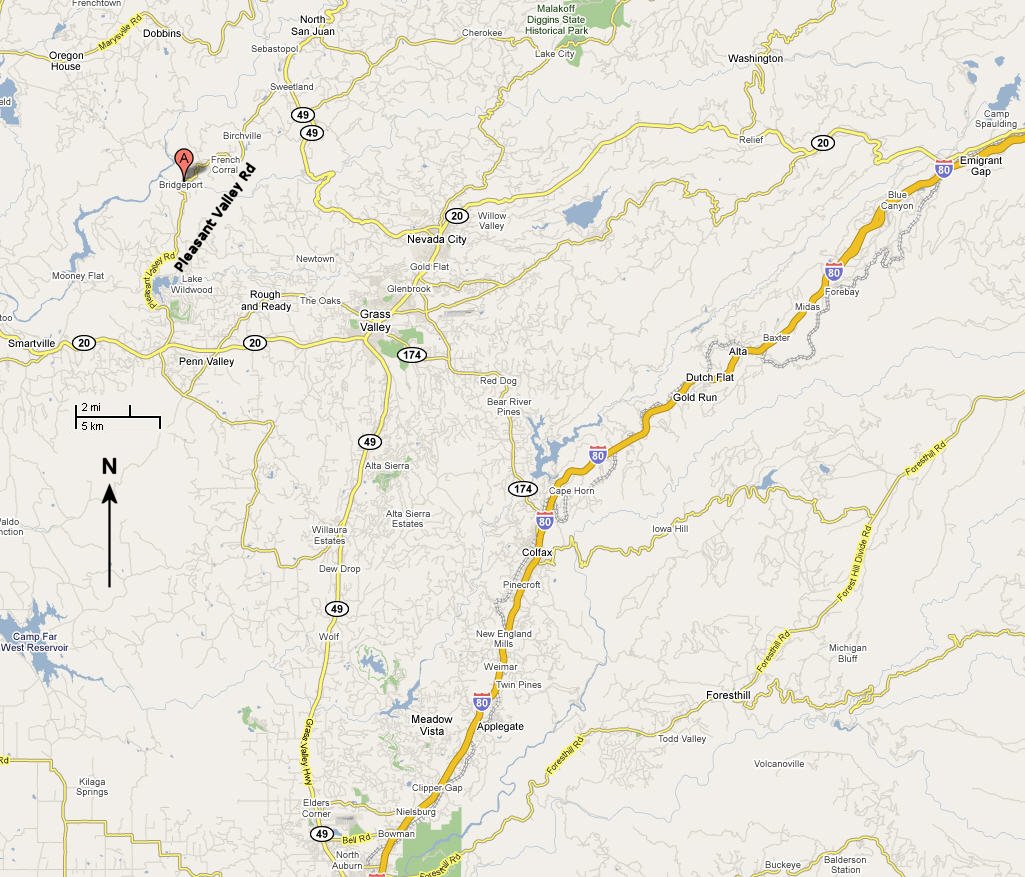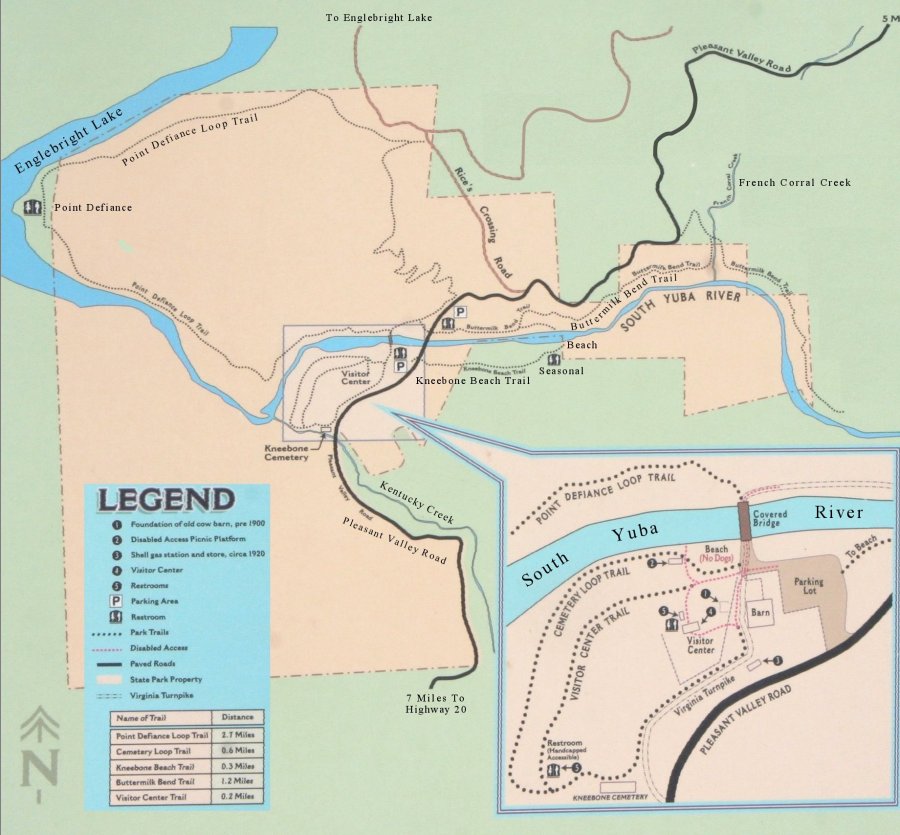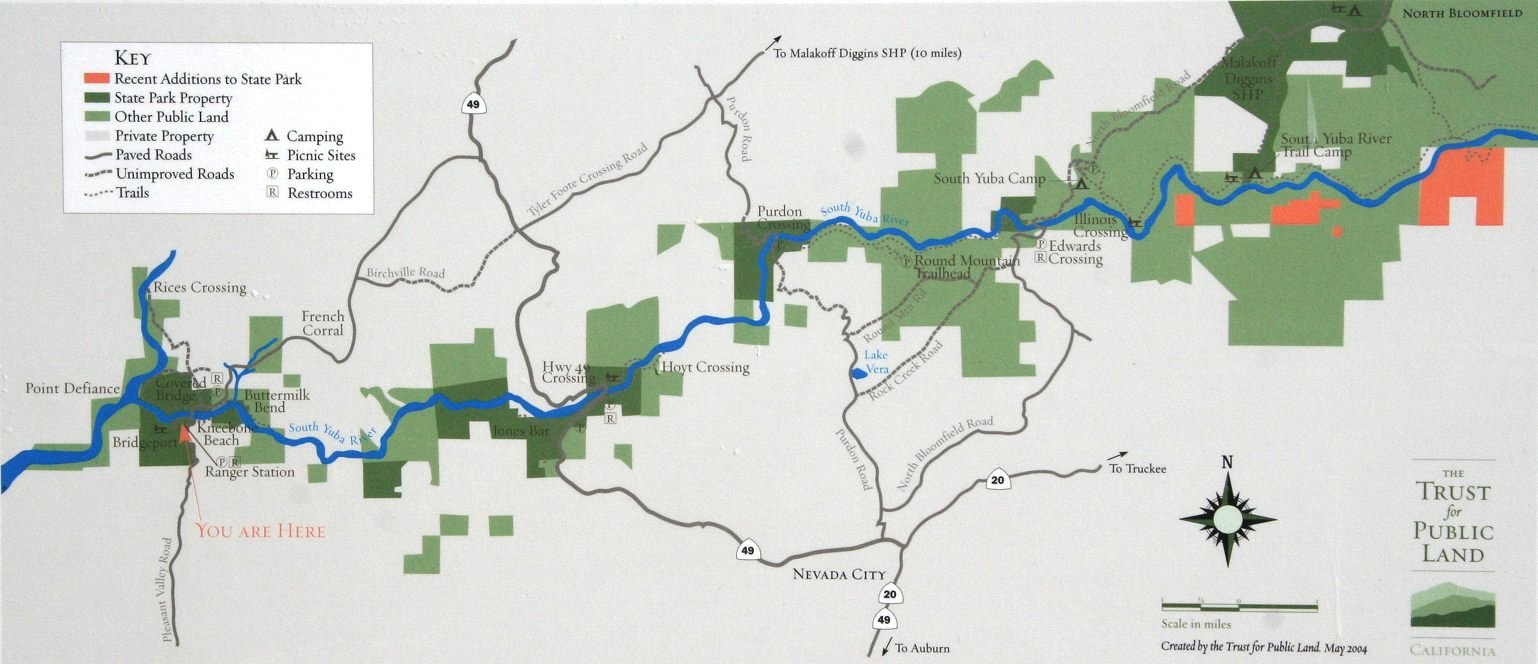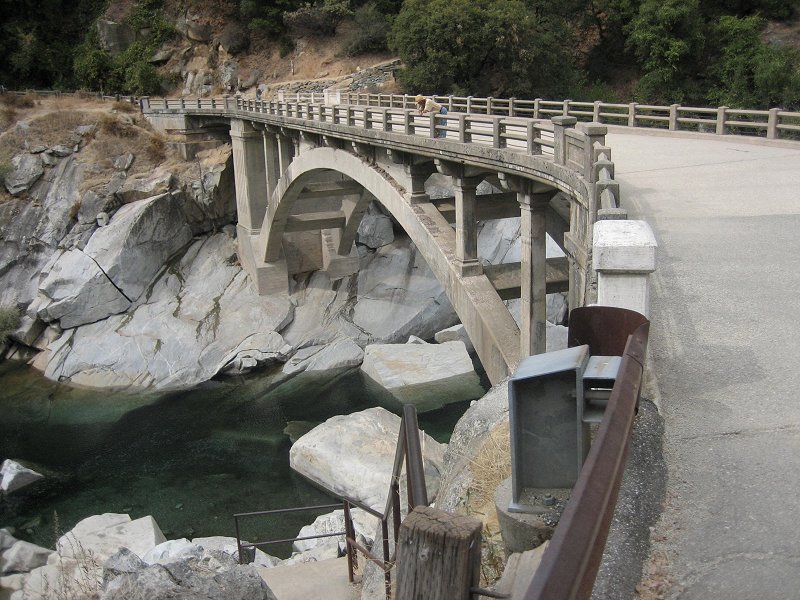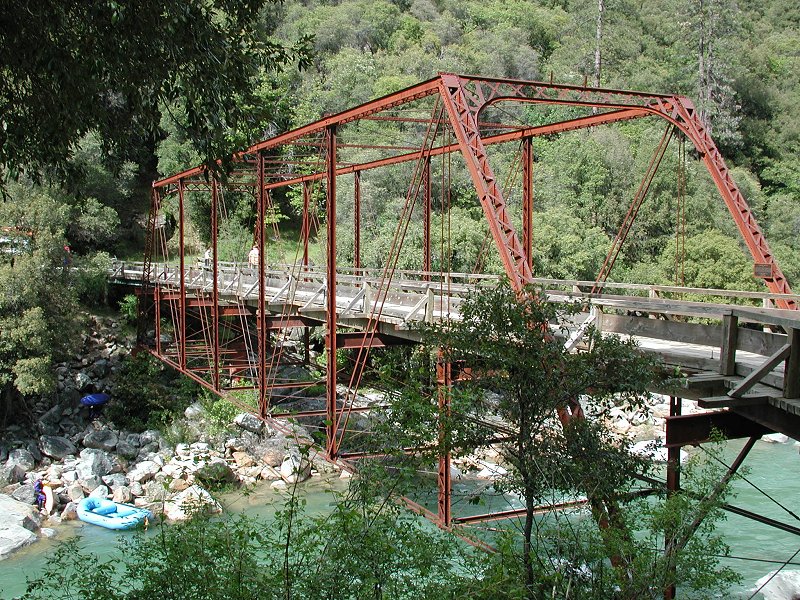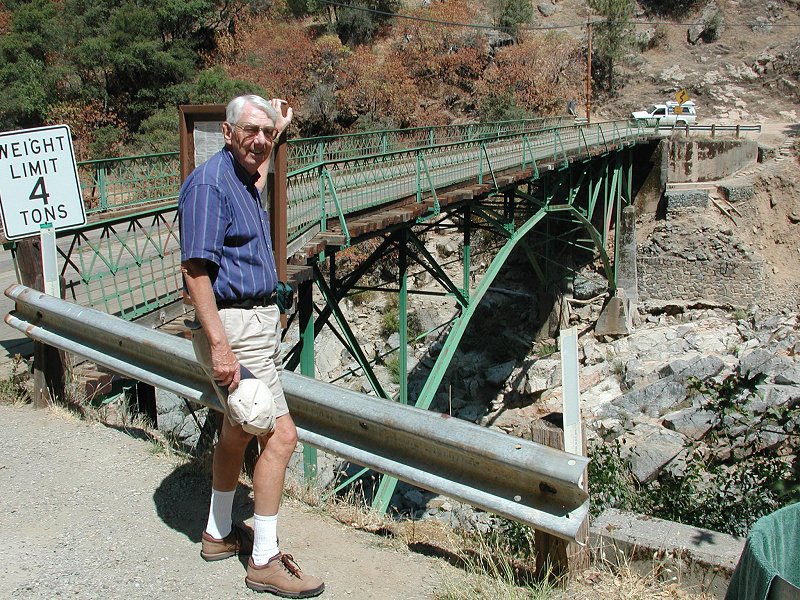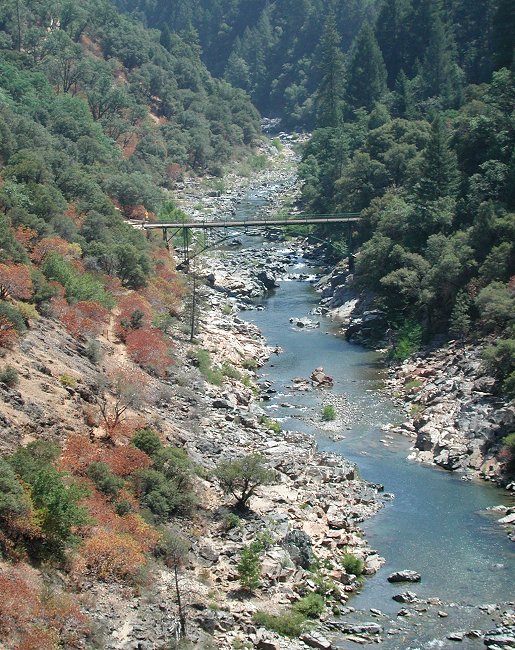|
Early South Yuba River Crossings
A brief note in the Feb. 2007 SYRPA
Newsletter
The discovery of gold at Sutter's Mill by James Marshall brought
gold seekers to California, desperately searching all of the Sierra foothill
tributaries and rivers. In June of 1848, Jonas
Spect discovered gold near a place called Rose's Bar. Rose's Bar was a
short distance downstream from present-day
Bridgeport. John Rose is given credit as the first European settler to
build a permanent structure in Nevada County. In 1848 he built a trading
post for Native Americans and gold seekers that was halfway between present day
Lake Wildwood and Bridgeport.
The gold seekers poured into Yuba
River Canyon, concentrating heavily in the area of today's South Yuba River
State Park. This was not only a migration of ethnic Europeans but one of ethnic
Asians as well. By 1852 there were 3,000 Chinese in what is now Nevada
County, and 25,000 more throughout the other gold fields of the Sierra
Nevada. In fact, the Chinese made up 25% of the state's population by
1870. (The 1852 census showed less than 950 native Americans). The rapid
entrance of these emigrants in 1849 required them to set up tent sites along the
sand bars of the South Yuba River. These sites where given colorful names such
as Frenchman Bar, Banjo Bar, Illinois Bar, Jones Bar, and Champion Bar (near
Hoyt's Crossing).
The need for crossings along the
South Yuba River soon emerged. First were the ferries: Point Defiance
Ferry (near present day Bridgeport); Jones Bar Ferry (near present day Hwy. 49
Bridge); Moore's Ferry (present day Purdon Bridge); and Edward's Crossing near
Illinois Bar. These crossings were little more than ferry owners overturning
wagons and putting them together as makeshift barges. Each crossing has
its own unique history. Very quickly several ferry crossings gave way to
construction of the first bridges.
The first bridges on the South Yuba
River were at Bridgeport (Birdeye) in the early 1850's; Robinsons Lower Crossing
(present day Purdon Crossing Bridge); Robinsons Upper Crossing (present day
Edward's Bridge); Coopers Bridge (Illinois Bar); Hoyt's Crossing built by Moses
Hoyt completed in 1854; and Coopers Bridge.
Lying within the South Yuba River
State Park today are four historic bridges. The Bridgeport Covered Bridge, built
in 1862, is a unique wooden structure incorporating both a Howe Truss and a Burr
Arch. The Purdon Crossing Bridge, built in 1895, is the only remaining
half-through metal truss system bridge west of the Rocky Mountains. The Edward's
Crossing Bridge, built in 1904, is constructed with triangular members and steel
pins in a three-hinged metal arch configuration. This bridge was the main access
to North Bloomfield (Malakoff Diggings SHP.) from Nevada City using the old
South Yuba Turnpike Road. The old Highway 49 Bridge, built in 1921, uses
concrete for its arches and deck structure.
|

